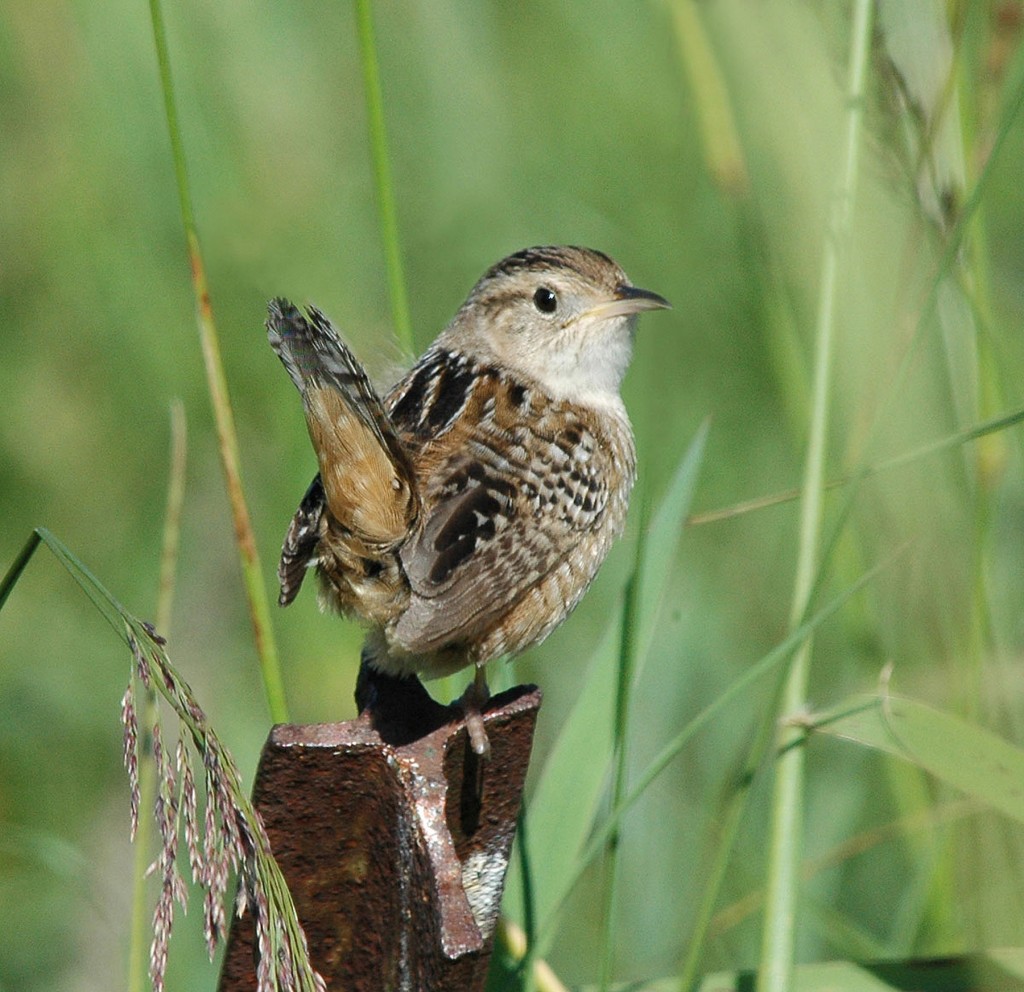Part of our emphasis in the Friends of the Migratory Bird/Duck Stamp is that the purchase of a stamp is not something that will just benefit waterfowl. Among birds, many species of shorebirds, long-legged waders, and wetland and grassland songbirds are dependent on habitat derived from stamp purchases. And one fine example is the Sedge Wren (Cistothorus platensis), a songbird species that benefits greatly from stamp investment.

This small and somewhat elusive wren can usually be found in breeding habitat between dry grasslands and cattail-enhanced marshland. When the bird is flushed, it may flutter only a short distance before dropping back into the moist grass. Its call, a short and high tick, can be easily recognized, and its weak, dry, and unmusical song starts with a few single notes followed by a tepid staccato. In breeding season, the song is usually delivered from a few distinctive vantage points.
Like the bird, the nest is well-hidden, found in thick growth, preferably grasses or sedges, near the ground.
In breeding season, Sedge Wrens can be found in the Great Lakes region, westward through the midwest, great plains, and prairie regions. It benefits greatly from refuges and WPAs in the Prairie Pothole Region. In fact, studies have shown that densities of grassland bird species such as Bobolink, Grasshopper Sparrow, Clay-colored Sparrow, and Sedge Wren are remarkably higher on Refuge System grasslands than on the landscape in general.
This species winters in the southern U.S., from the Delmarva, through the Gulf Coast, and into eastern and central Texas. It is often found wintering in refuge habitat on the Gulf Coast. In fact, some of the highest counts for Sedge Wrens during annual Christmas Bird Counts have been on NWRs. (For example, a remarkable 191 Sedge Wrens were on the San Bernard NWR Christmas count for the 2011-2012 count.)
Final thought: One of our active Friends has opined the following: “Buy a ‘Duck Stamp,’ and save a Sedge Wren!”